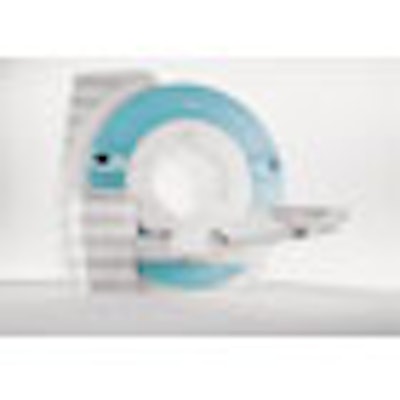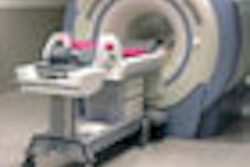
In the MRI section of its RSNA exhibit, Siemens of Malvern, PA, will shine the spotlight on 3-tesla scanning, the company's ultrawide-bore 1.5-tesla system, and new scanning protocols for improving image quality by reducing motion artifacts.
In the 3-tesla segment, Siemens will offer up its Magnetom Trio scanner, which supports the company's Total imaging matrix (Tim) surface-coil concept. Tim is designed to speed up exam workflow by covering patients with surface coils, obviating the need to have coils swapped in and out during the scan.
Look for Siemens to tout the homogeneity of Trio's magnet, as well as gradient performance with a slew rate of 200 milliTesla/meter/millisecond (mT/m/msec). The vendor's Audiocomfort technology reduces acoustic noise by 90%, making the patient experience more comfortable. Tim is available in configurations from eight to 32 channels, and a dedicated neck coil is also available.

Tim technology is also available on Espree, with possible combinations of up to 76 coil elements and 18 radiofrequency channels, delivering a potential virtual field-of-view of up to 205 cm. This enables whole-body runoff studies in seconds, even on tall patients, according to the company. Espree's gradients are rated at 33 mT/m and offer a slew rate of 100 mT/m/msec.
On the software side, look for Siemens to highlight syngo Blade, a new scan sequence that reduces motion artifacts and improves image quality. The technique is particularly well-suited for patients in whom motion can compromise image quality, such as children and neurological and orthopedic patients.
The application measures and corrects motion in the sagittal, axial, and coronal imaging planes, and users can combine syngo Blade with the company's iPAT (integrated parallel acquisition technique) technology for faster exam times. syngo Blade was introduced in May 2006 and is available on all of the vendor's Tim systems, including its Magnetom Avanto, Symphony, Espree, and Trio scanners.
By Brian Casey
AuntMinnie.com staff writer
November 1, 2006
Copyright © 2006 AuntMinnie.com



















